Lymphangitis in horses is a chronic inflammation or swelling that causes impairment of the lymphatic organs. The disease causes swelling of the horse’s limbs, especially the hind limbs, and the disease is also called big leg disease or fat leg disease. In addition, the disease is sometimes called Monday Morning disease or weed, not confused with azoturia or exertional rhabdomyolysis.
Important Information on Lymphangitis in Horses
Equine Lymphangitis is an infectious disease caused by several organisms like bacteria and fungus. There are three forms of Lymphangitis in horses; sporadic Lymphangitis, ulcerative Lymphangitis, and epizootic lymphangitis. I shall discuss these three forms of Lymphangitis sequentially in my article.

Types of Equine Lymphangitis
Ulcerative Lymphangitis
Corynebacterium pseudotuberculosis produces a syndrome of ulcerative Lymphangitis or abscess formation. Folliculitis and abortion were also reported due to the infection of this bacteria. The bacterium is a Gram-positive, non-motile facultative anaerobic that survives in the environment and can infect other species, including humans.
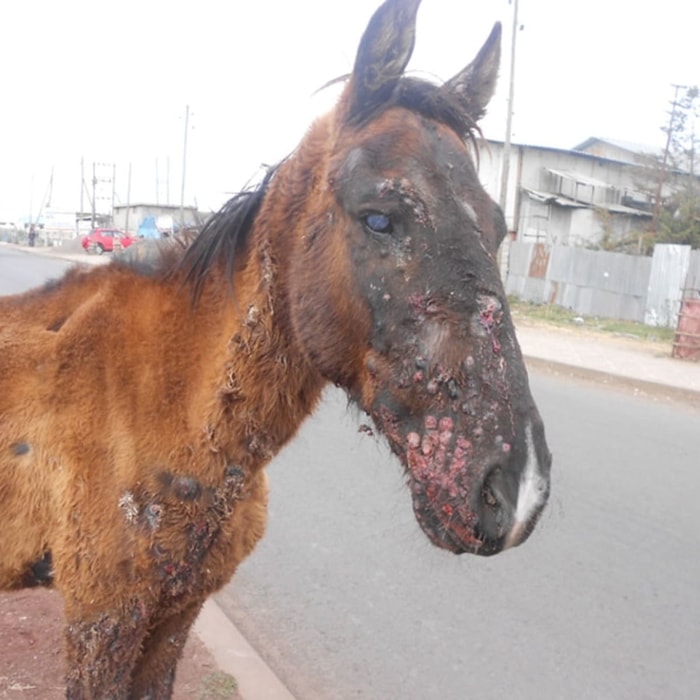
Epizootic Lymphangitis in Horses
Histoplasma farciminosum, a fungus, causes epizootic Lymphangitis, a condition still encountered in parts of the African and Asian continents. In these epizootic areas, new cases usually arise in autumn or winter. This fungus infection has superficial clinical similarities to glanders and ulcerative Lymphangitis.
The lesions of epizootic equine Lymphangitis affect the lower limbs and their distribution, and other circumstantial evidence suggests the infection is acquired from a mycelial phage in the soil. The fungus is present in its yeast phage in the thickened and suppurating vessels and aggregates of lymphoid tissues. The infection is thought to be acquired minor aberration wounds in the skin.
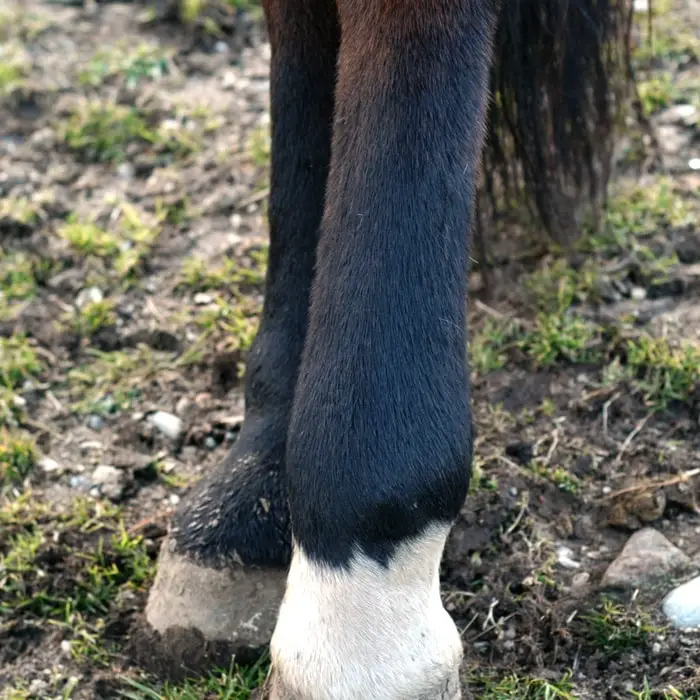
After few weeks, the inflammatory process in the thickening lymphatic vessels may cause local ruptures. Deep ulcers in the skin cause thick pus in which yeast cells can be detected microscopically. Without treatment, the clinical course lasts about a year but affected animals eventually recover.
Sporadic Lymphangitis in Horses
Mycoplasma spp is responsible for sporadic Lymphangitis in horses. The organism is difficult to culture and identification. The body’s immune response can effectively eliminate the organisms, and the disease occurs due to the excessive immune response. The organism is a fungus and very difficult to culture.
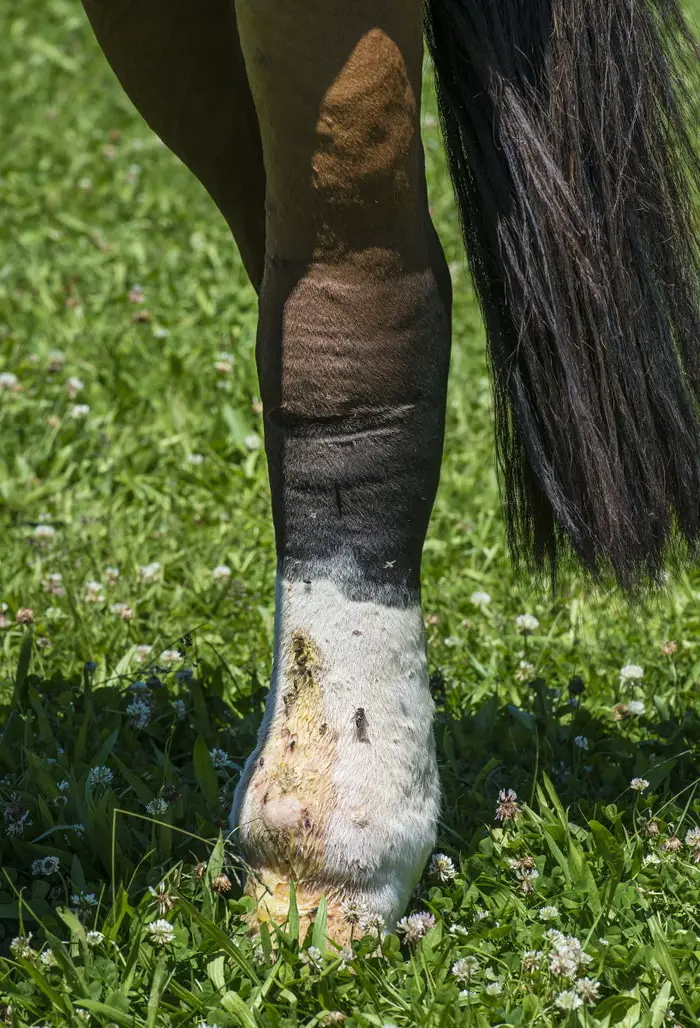
Clinical Signs of Equine Lymphangitis
The general clinical signs and symptoms of Lymphangitis in horses are:
- Extreme swelling of the hind limbs of the affected horses.
- The swelling of the limbs may reach from the hock joint to the stifle joint.
- The swelling may like “pitting edema” in the early stage of the disease; there is a depression on the skin after pressing the fingers.
- The affected leg may swell up to twice its original size and sensitive to touch.
- In chronic cases, the swelling of the legs is firm, fibrinous, and presence of scarring.
- There may be the presence of wounds, and bacterial infection may occur.
- The lameness of the horse and the degree of lameness is variable.
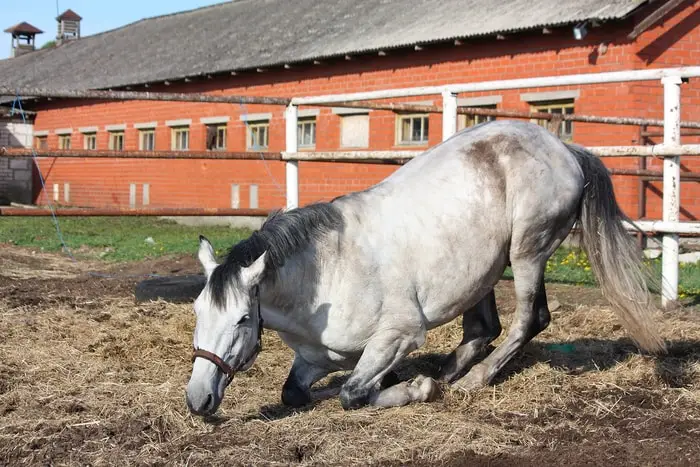
- Due to extreme pressure, there may be fractures of the legs.
- There may be a presence of fever due to bacterial infection.
- The affected leg may ooze serum or exudates.
- In ulcerative Lymphangitis, the lymphatics may form ‘cording’ and formation of hard nodules.
- There may be the presence of greenish discharge from the ulcers.
Diagnosis of Lymphangitis in Horses
The disease is difficult to diagnose due to various causes. However, the disease can be diagnosed by the following protocol:
- The history of the disease is the same locality.
- Clinical signs and symptoms.
- Radiography of the affected legs.
- Ultrasonography of the legs to diagnose the different pockets of ulcers and abscess.
- The fluids from the wounds may be collected and bacteriological cultures to diagnose the causa agents.
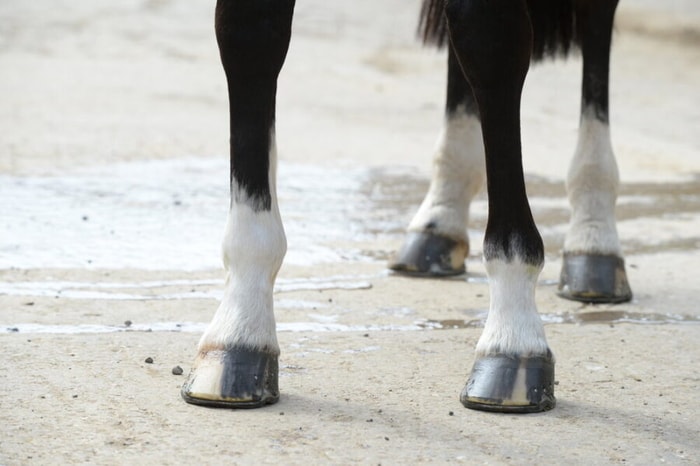
Differential Diagnosis of Equine Lymphangitis
The disease should be differentiated from the following:
- Azoturia or Monday Morning Disease (MMD).
- Equine Laminitis.
- Tendinitis.
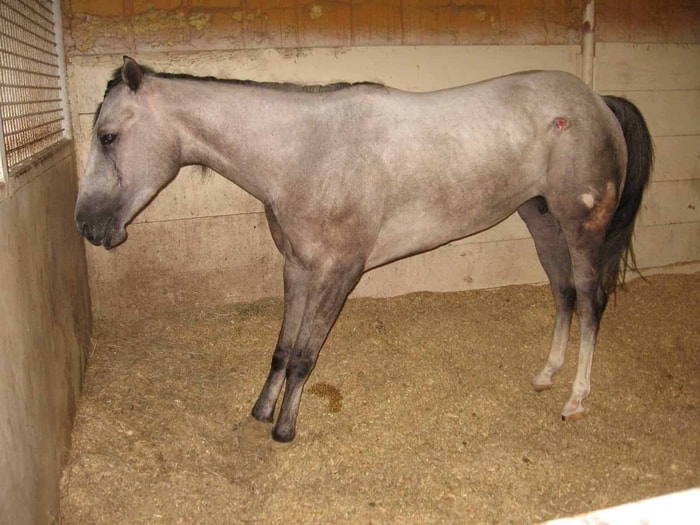
Treatment of Lymphangitis in Horses
The disease is difficult to treat, and you may follow the treatment protocol discussed below:
- Administration of a broad-spectrum antibiotic (Penicillin, Oxytetracycline, Streptomycin, or Doxycycline is more effective).
- You can go for an antibiotic sensitivity test and give the specific antibiotic to get practical and prompt results.
- If the disease is caused by Corynebacterium pseudotuberculosis, you can give Rifampin in addition to other antibiotics.
- NSAID (flunixin, phenylbutazone)is effective in reducing the pain and inflammation in the affected legs.
- You can use corticosteroids in severe cases but with extreme care.
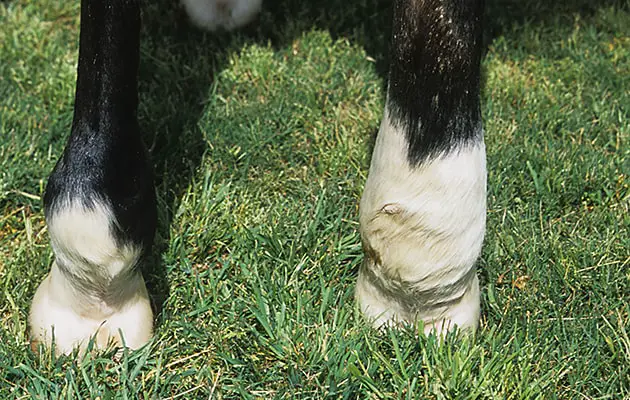
The physical treatment and care are as follows:
- Movement of the horses slowly.
- Application of bandages on the affected leg.
- Application of cold water to the affected area.
- A sweat bandage or poultice may be applied.
- Continuous turnout and exercise should be continued.
Outcome or Prognosis of Equine Lymphangitis
If the disease is diagnosed initially, the pain and lameness may be reduced. However, the swelling may persist for few weeks. Equine Lymphangitis may be recurrent even after treatment. The poor lymphatic circulation may lead to Lymphangitis in other limbs also.